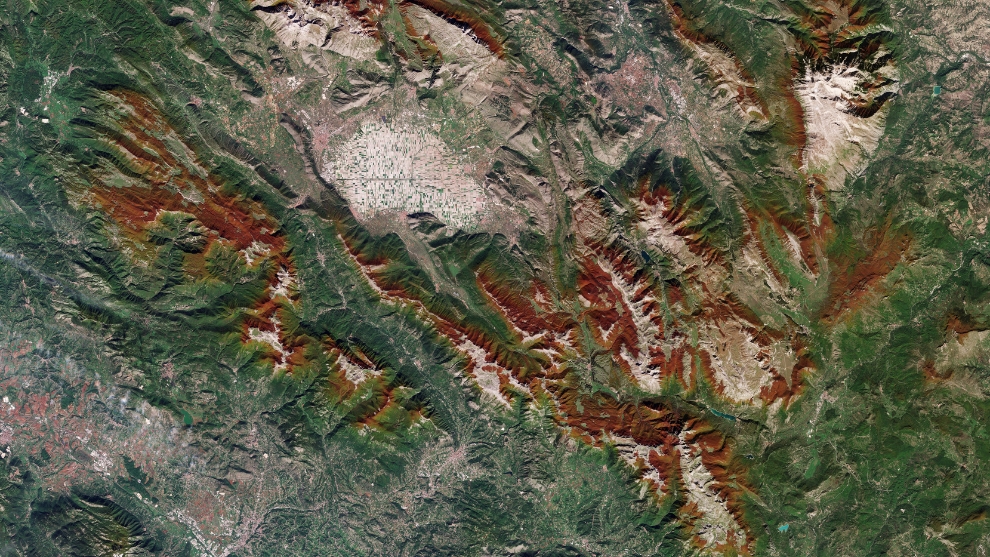Earth from Space – Fucino, Italy


Tucked away in the Fucino Valley, in central Italy, lies the Fucino Space Centre, where Telespazio will manage the early orbit activities of the Meteosat Third Generation Imager, set to launch on 13 December from Europe’s Spaceport in French Guiana.
Lower temperatures and decreasing daylight hours in October 2022 triggered the autumn foliage in the central Apennines Mountains, Italy. Shades of orange and red in this Copernicus Sentinel-2 image depend mainly on the local weather, altitude and orientation of the slopes.
In the centre-left of the image lies a lush valley known as the Fucino Valley. The densely packed rectangles are agricultural fields, with the main vegetables grown here being potatoes, carrots, tomatoes and lettuce. The fields divide a region that used to hold the country’s third-largest body of water, Lake Fucino, which now provides over 13 000 hectares of fully workable and highly fertile land.
Hidden in this agricultural area is the Fucino Space Centre, visible towards the lower right of the plain, surrounded entirely by fields. As well as 170 antennas, it houses one of the two control centres that manage Galileo – the European satellite positioning and navigation system.
It is from the Fucino Space Centre where Telespazio will manage the Launch and Early Orbit Phase (LEOP) of the Meteosat Third Generation Imager (MTG-I) satellite. The operations team at the space centre will manage the early orbit activities and final orbit transfer.
MTG-I is the first of a new generation of satellites providing crucial insights for the early detection and prediction of fast-developing severe storms, weather forecasting and climate monitoring. The complete satellite system will bring about a significant improvement in the ability to observe meteorological phenomena, ensuring higher-level forecasting capabilities, particularly for ‘nowcasting’ – the short-term monitoring and forecasting of rapidly evolving meteorological phenomena.
Telespazio has been involved in the development of the MTG programme, particularly in the development and management of the ground segment, handling both data acquisition and satellite command and control operations.
MTG-I will carry two completely new instruments: a Flexible Combined Imager and Europe’s first Lightning Imager, developed by Leonardo in Italy, which will be able to capture individual lightning events in the sky, whether day or night.
Join us for the live launch coverage of the Meteosat Third Generation Imager on 13 December on ESA Web TV. For updated launch details, please check here for more information.
